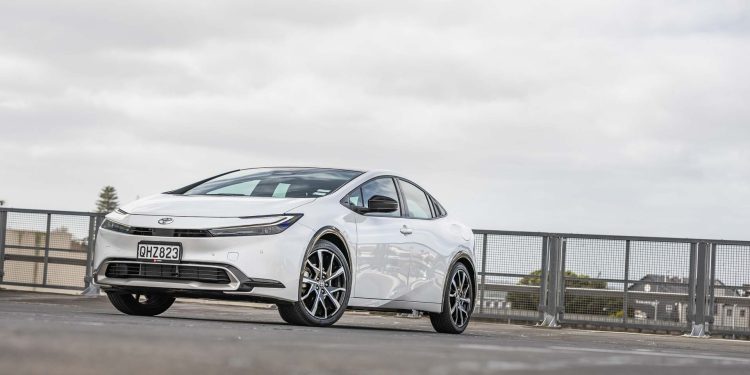2024 Toyota Prius PHEV review
Words: Kyle Cassidy | Photos: Isaac Western
The Toyota Prius is no longer an official model for Toyota NZ but it’s not off the menu completely. It can be sourced via Toyota’s Signature Class and here we try the plug-in version.
An American set a new record recently by driving his fifth-gen Prius from LA to New York, averaging just 2.5L/100km over the 5100km journey. That’s around 1700km to a tank.
His feat was recognised by the folk at Guinness World Records for the coast-to-coast drive, beating the old mark of 3.1L/100km.
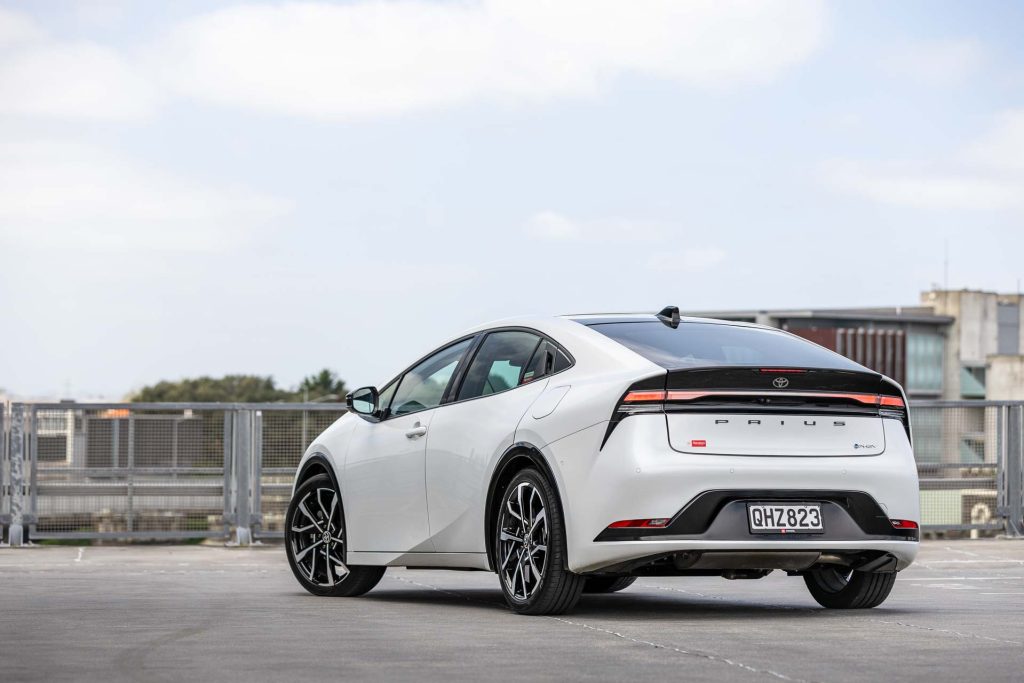
No word on the average speed but it wouldn’t have been the fastest ever recorded, hypermiling all the way.
Apart from being outrageously economical, the latest Prius is getting rave reviews overseas; this new one blends the hybrid’s frugality and reliability with seductive styling and cunning dynamics.
A pity it’s no longer part of the Toyota New Zealand line-up, the decision made in 2022 not to offer the new Prius here. Except that now you can get one locally, via the Signature Class range.
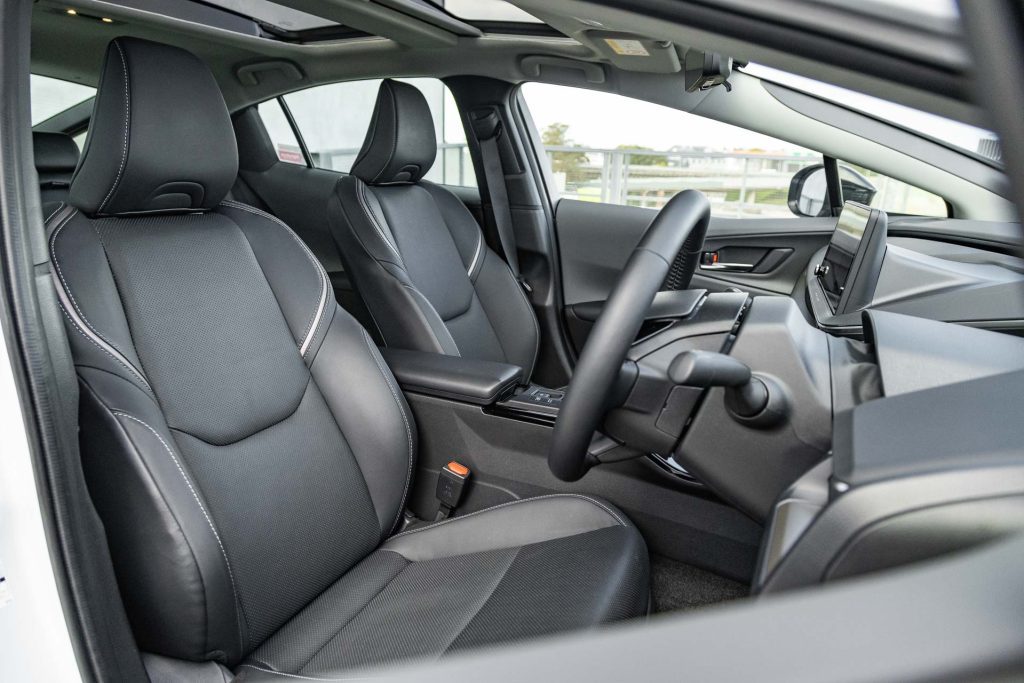
These are ‘near-new’ imports, usually with minimal kays and a five-year warranty. You can opt for the regular HEV in various model grades, or the plug-in, which is what we have here.
The price range of the HEV is between $50k to $60k, depending on spec and mileage. The PHEV is more again.
Prius with a plug
Regarding the plug-in, model specifics are scarce with TNZ’s website noting it’s subject to Road User Charges ($38 per 1000km). The electric driving range is 87km with 19-inch alloys, and 105km on 17s.
Gleaning overseas sources, this plug-in uses a 2.0-litre four-cylinder paired with a 120kW and 208Nm traction motor. The hybrid output is 164kW and the usable battery capacity is 13.6kWh.
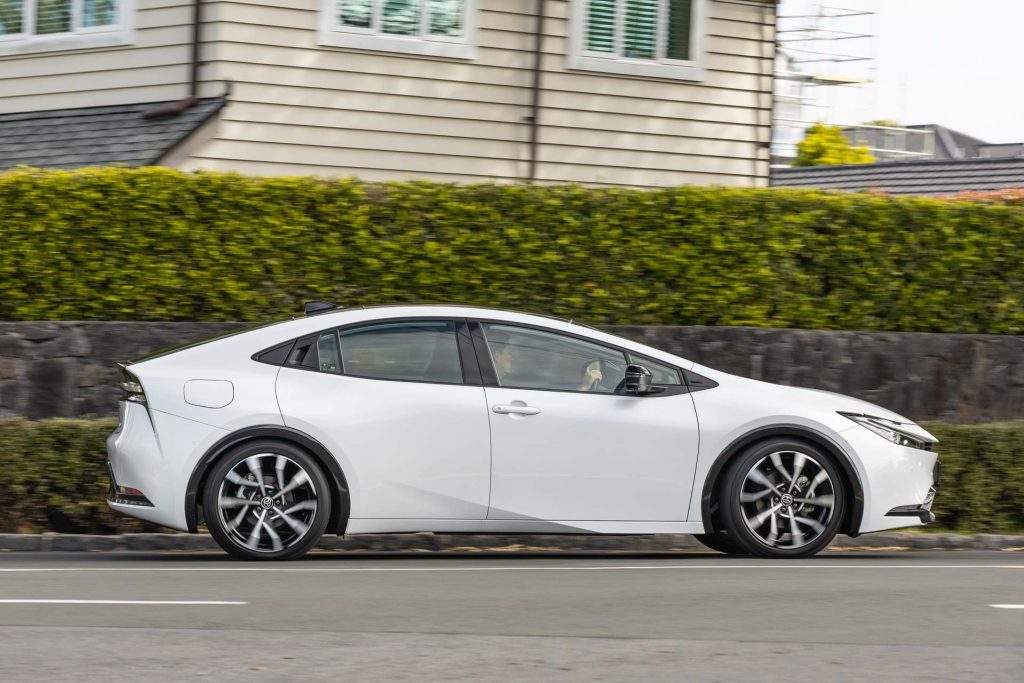
This isn’t the first plug-in Prius we have driven. The first (circa 2012) was also offered via Signature Class, the claimed EV range being 26km, though you were lucky to make it into the teens.
Toyota NZ offered the Prius Prime here in 2018, the $48,490 machine with a claimed 63km EV range (we noted 45km on test) from its 8.8kWh battery, with a combined output of 90kW.
So the new generation has made some big gains.
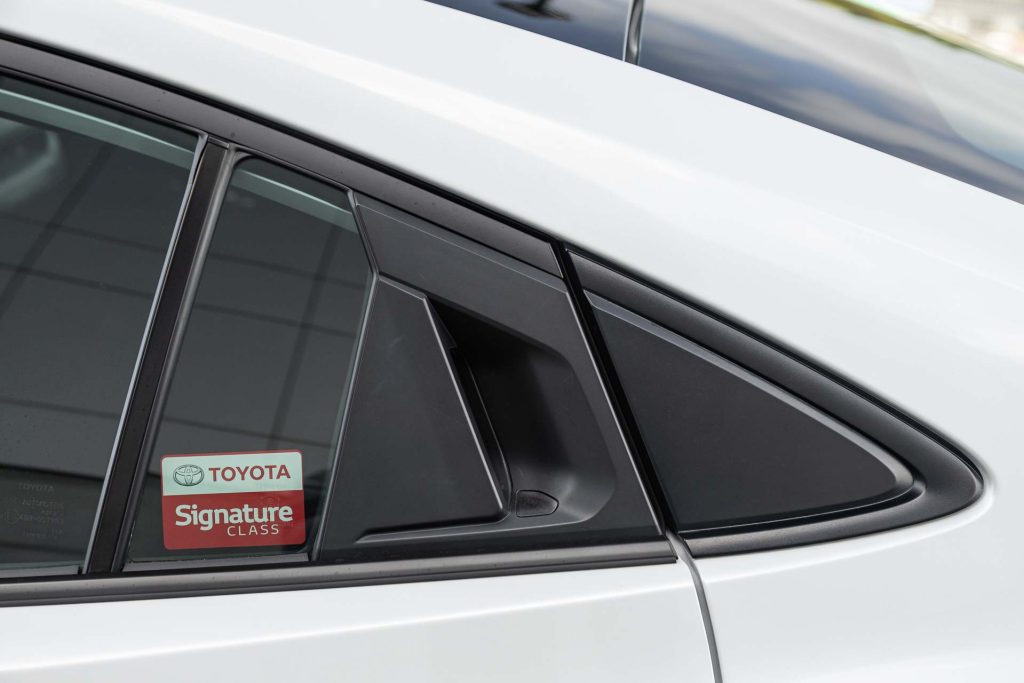
How frugal?
As to fuel consumption, it depends on how far you drive and how often you charge. With both energy stores full, we had a range just shy of 700km, with 77km of EV potential.
We managed 70km before it switched from EV to HEV operation. Plug-ins don’t run the battery completely dead in EV mode, leaving around 10-20 per cent of charge to allow them to run in hybrid mode.
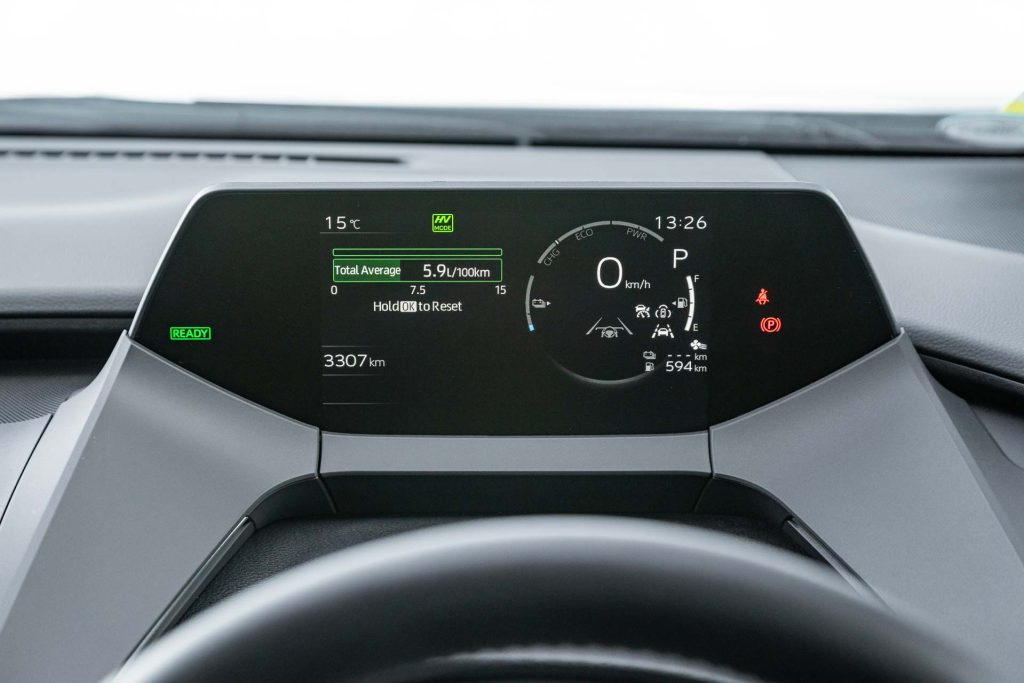
Here, it operates like a regular Toyota HEV, the system using a mix of engine and motor to get you there. The trip computer reads in kWh/100km in EV mode, tracking in the 15kWh/100km zone, which is pretty good for a PHEV.
And then once it’s in HEV mode, it’ll switch to L/100km. We decided to check on consumption sans charging. After zeroing the trip computer, it ended up at 4.9L/100km for a mix of city and motorway driving over a distance of 120km.
Best PHEV economy is always netted when starting the day with a full battery. Charging they say takes 2.5 hours if you get yourself a wall box or 6.5 hours with the supplied three-pin home charging cable.
You can’t fast AC charge this however. No biggie really as when you’re travelling longer distances, you’ll be refuelling, not recharging.
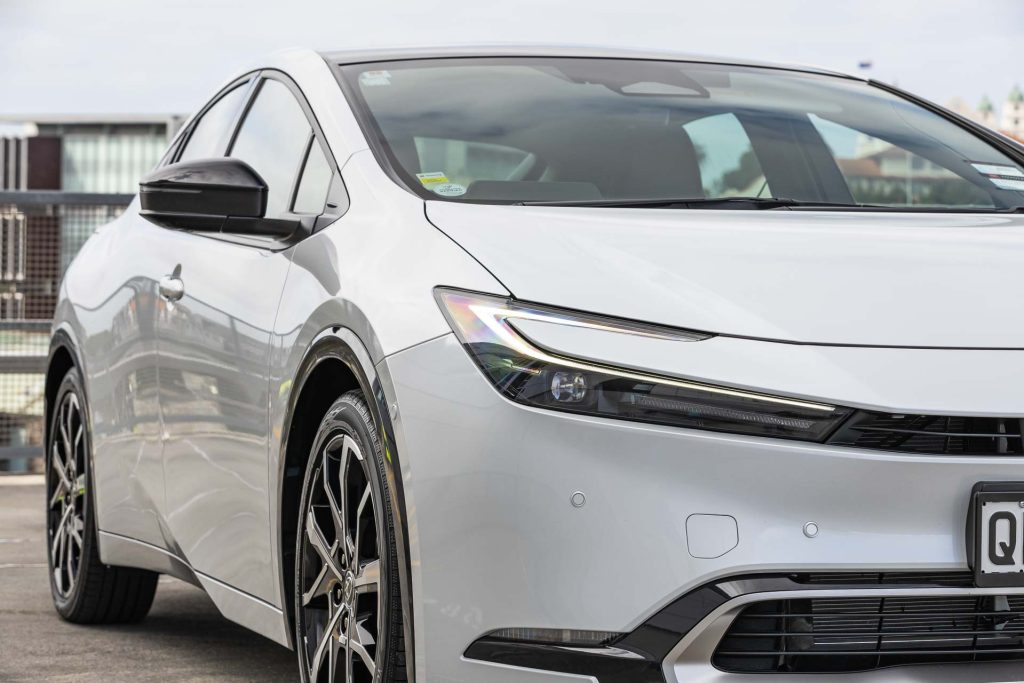
EVs well
EV mode supplies sufficient power to get you around the ‘burbs, and along the motorway. Not until the accelerator meets the firewall is the 2.0-litre summoned into action.
Those who do 70km or less a day and charge every night will use almost no gas. And you’re paying less than half the RUCs of a full BEV.
The B mode, accessed via the gear lever, will add motor regen when you’re off the gas. Or you can let the Prius do it for you; when the sensors detect traffic ahead, it will automatically start slowing.
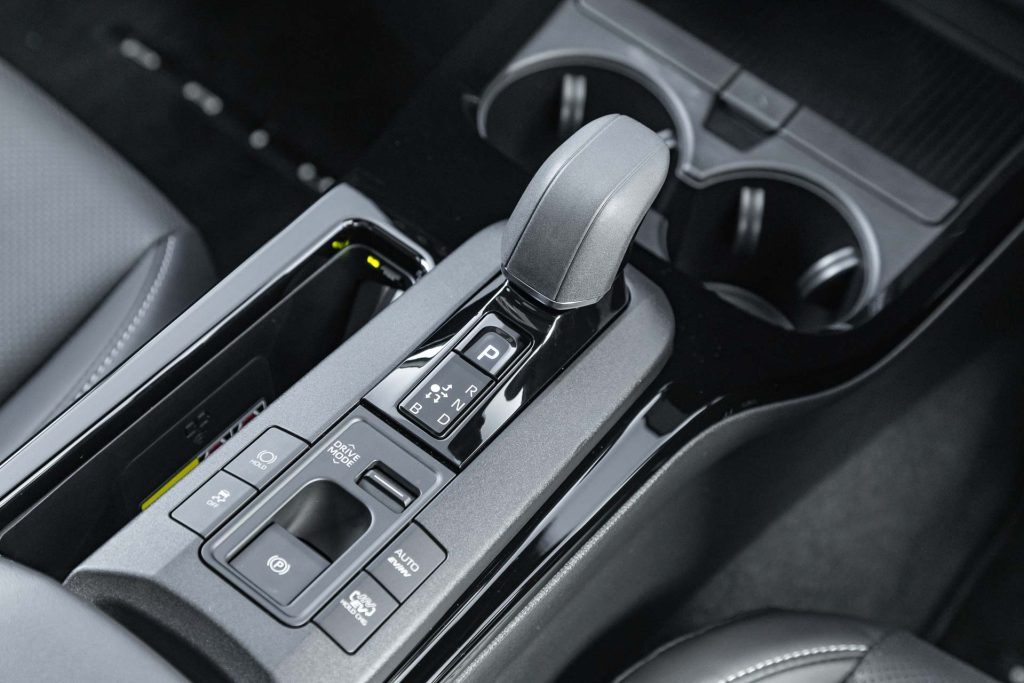
A further function has the car slowing for bends, though this is inconsistent, slightly unnerving at times, and something we could live without.
There’s quick and easy steering, a good turning circle and a decent outward view considering the abbreviated glass house. Some of these aero efficient Kammtail designs have poor reward vision but this is okay.
And there’s an effective surround view camera. Most of the safety and driver assist stuff is well behaved, though there are a few annoying warnings; approach an intersection or exit a driveway and it’ll issue an alert to look for cross traffic. Thanks for that.
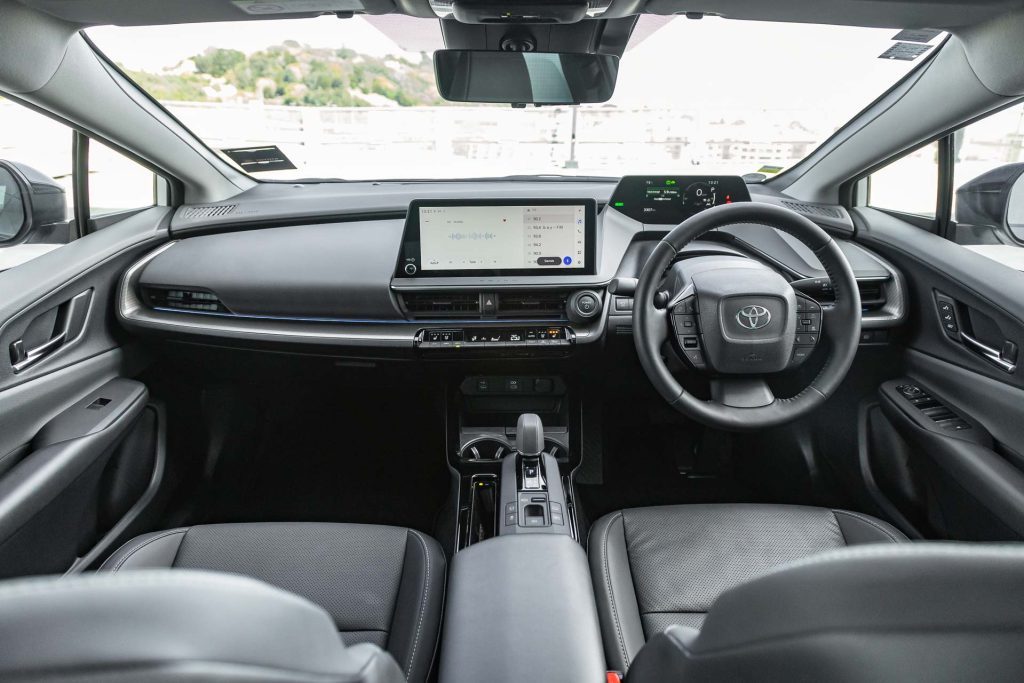
Dynamic too
This drives in a manner that the engineers of the original Prius would never have imagined possible. In its HEV mode, the response from the powertrain is laudable, without the need to be in Sport mode either.
And this isn’t slow. Where the previous model took a leisurely 11.7sec to hit a hundy, this one attains the mark in 6.9sec.
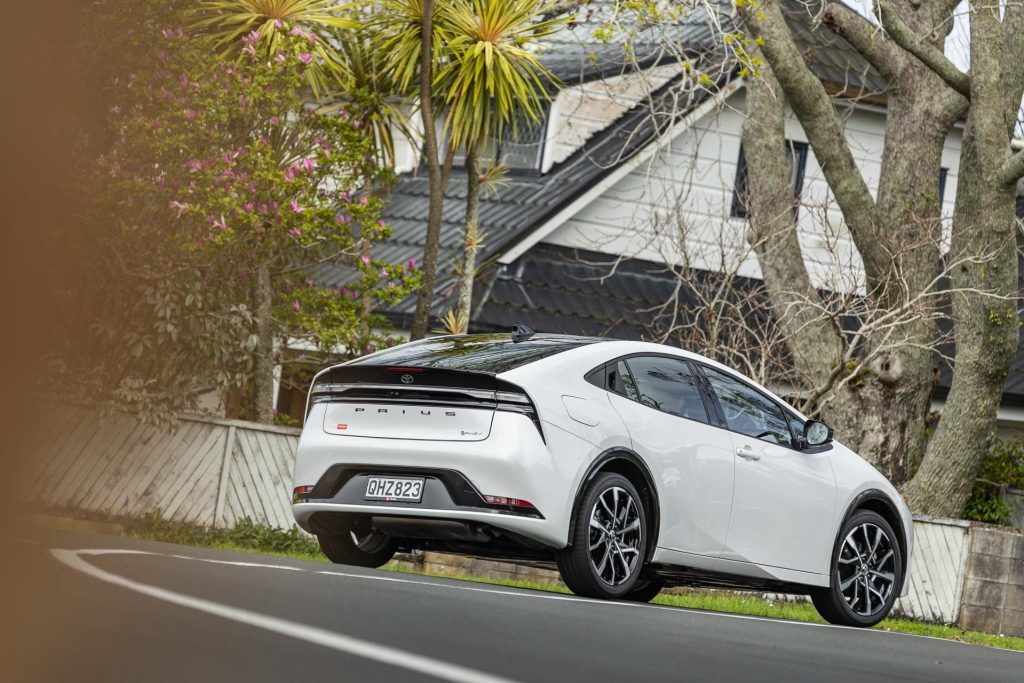
While not brimming with life, the steering is well assisted, resistance increasing agreeably in the turn as it tracks confidently through the curve. The front grips admirably considering the modest 195/50 rubber, the rear keeping itself tidy too.
So the brake pedal feels a tad ‘squishy’ but you can still haul it up smoothly. It doesn’t feel front heavy either, imparting a balanced character.
The one aspect that doesn’t quite gel with local roads is the 19-inch wheel package. It’s noisy on chip, little vibrations felt through the steering over rougher sections, and sharp edges are transmitted too.
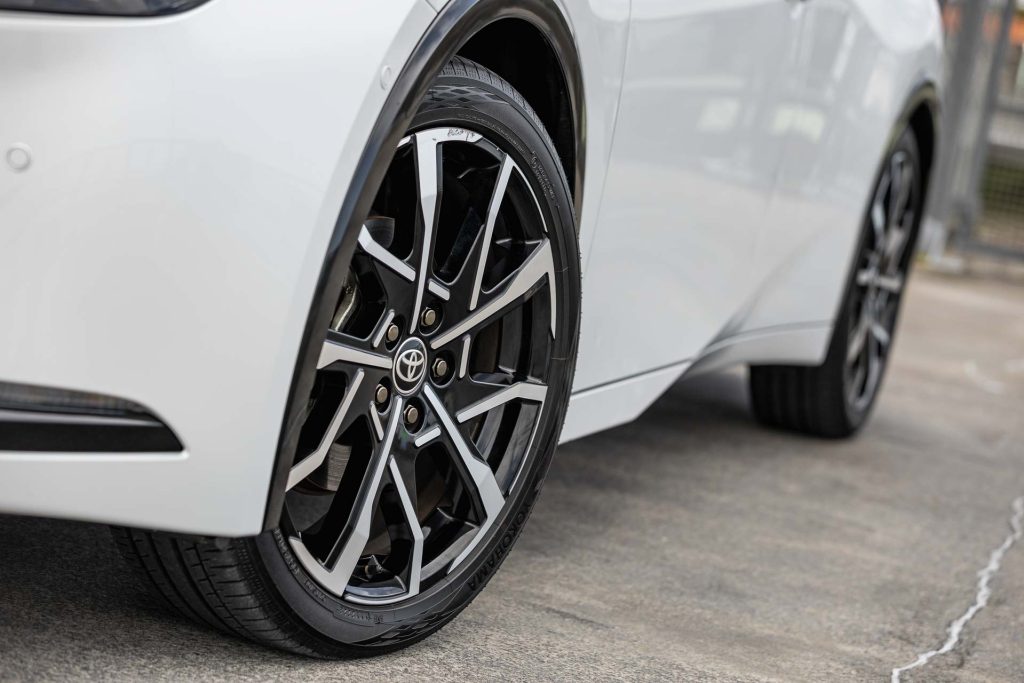
Otherwise, the ride quality is good, and probably better still on the 17s.
Impressive inside
The cabin gains an interesting design while it’s built to please with a mix of high grade plastics, most of them soft. The low-set seats are sorted for both comfort and support.
Even the ‘vegan leather’ trim will have you fooled. The seats are powered, heated and ventilated too.
The driver’s set-up is similar to that in the Toyota bZ4X, the steering wheel sitting below the instrument display, which is sited up closer to your line of vision.
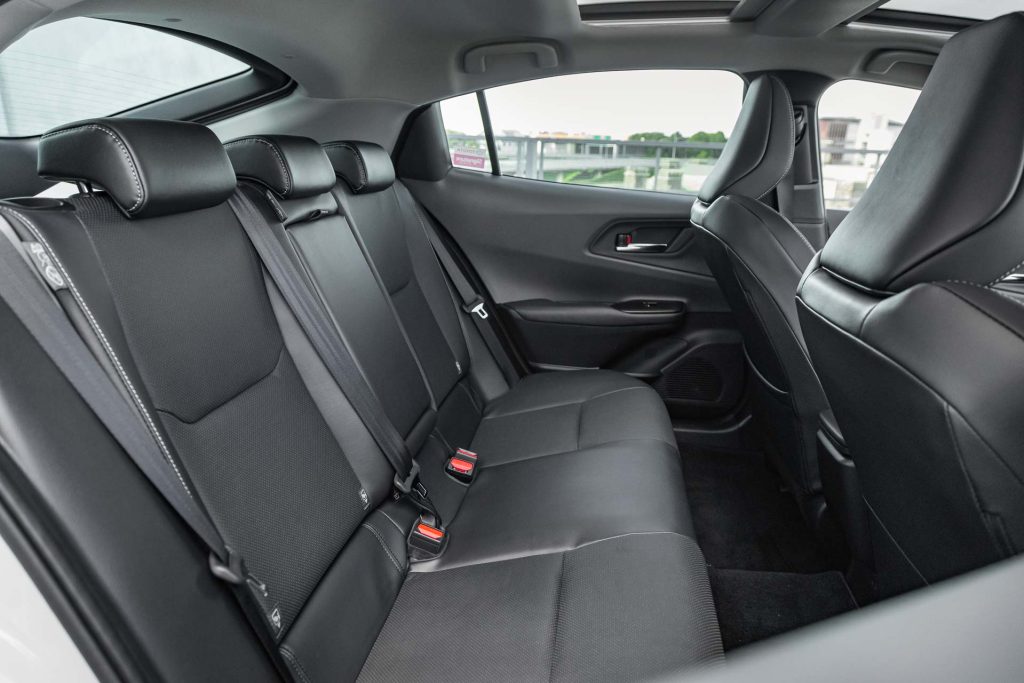
Being a Japanese import, the wide format touchscreen has a few foreign menus, and the sat nav is lost without a local map to follow.
Separate HVAC buttons are always appreciated, the cup holders are well sited and the phone charger slot is space efficient while keeping the device securely in place.
New Prius is a little shorter but has a 50mm longer wheelbase. And a more up-for-it look. This one’s almost desirable with a dynamic but aero friendly design.
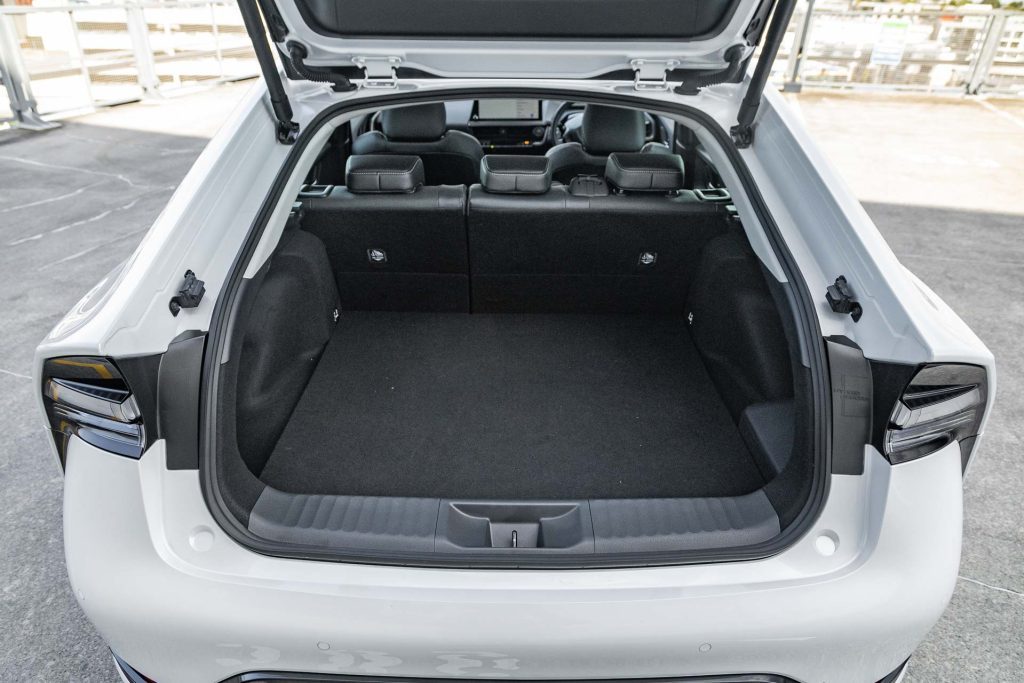
Once you have found the rear door handles, there’s a relatively easy entry, the racy roofline curved sufficiently to allow sufficient headroom in the back.
The seats here are comfy too, with more than enough legroom.
Its powered tailgate is slow and beepy, and the hold is small, with only 284L under the cargo cover. And with the slope of the tailgate, there’s not much space to pile things much higher either.
The seat folds in the usual 60/40 manner, presenting a flat load space.
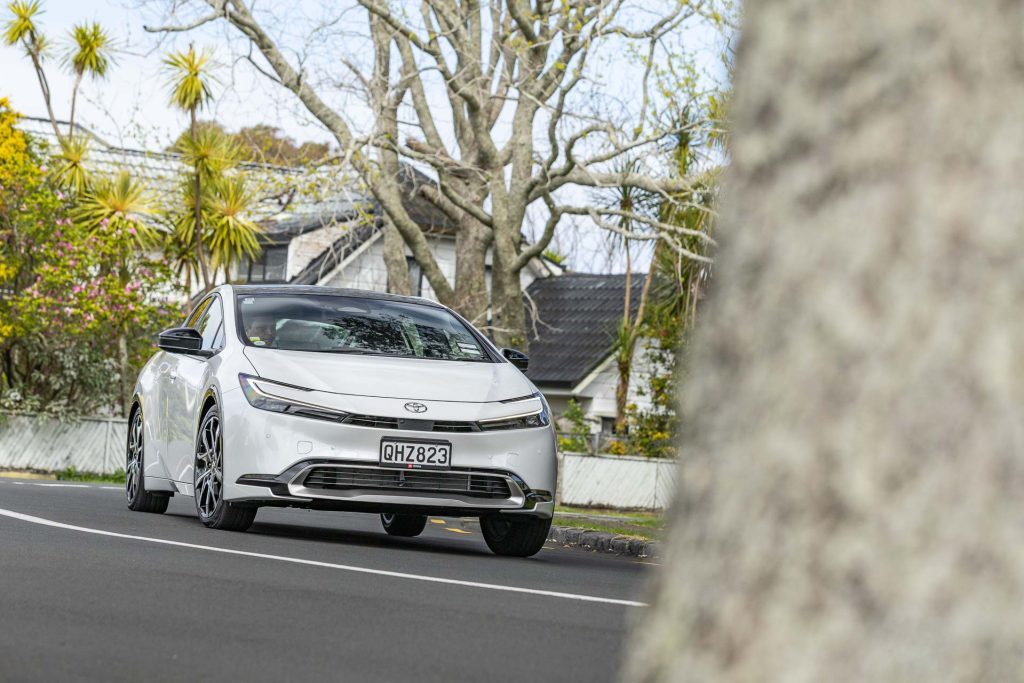
Too pricey but?
It’s not great news on the pricing front with the used import Prius PHEV at $71,990. With many more imports bound to arrive via used dealers, prices are sure to fall in time.
And so, this will be great buying a few years from now.
| Model | Toyota Prius PHEV |
| Price | $71,990 |
| Engine | 1987cc, IL4, DI |
| Power | 112kW @ 6000rpm |
| Torque | 190Nm @ 4400rpm |
| Motor Output | 120kW / 208Nm |
| Drivetrain | e-CVT / FWD |
| Turning circle | 11.2m (2.7 turns) |
| Range | 87km |
| Hybrid System Output | 164kW |
| 0-100km/h | 6.95 sec |
| Tyre Size | f/r-195/50/R19 |
| Fuel Capacity | 40L |
| Stability systems | ABS, ESP, TV |
| Safety | AEB, ACC, BSM, LDW, RCTA, ALK, AHB |
| Luggage Capacity | 284L |
| Tow rating | Not rated to tow |
| L / W / H | 4599 / 1782 / 1430mm |
| Warranty | 5 years/unlimited km |
| ANCAP rating | Not yet rated |
| Weight | 1545kg (claimed) |
This article first appeared in the October 2024 issue of NZ Autocar Magazine.


